EXERCISE from NCERT PHYSICS(ENGLISH) MOTION IN A STRAIGHT LINE for Class 11
| Class 11 | PHYSICS |
| Chapter | MOTION IN A STRAIGHT LINE |
| NCERT PHYSICS(ENGLISH) | EXERCISE |
| Medium | English |
| Academic Year | 2023-2024 |
Question 1
In which of the following exmples of motion, can the body be considered approxinmately a point object :
(a) a railway carriage moving without jerks between two two stations.
(b) a mondey sistting on top of a man cycling smoothly on a circulat track. (c ) a spinning cricket ball that turns sharply on hitting the round . (d) a tumbling beake theat has slopped off the edge of a table ?View SolutionQuestion 4
A drunkard walking in a narrow lane takes 5 steps forward and 3 steps backward, followed again by 5 steps forward and 3 steps backward, and so on. Each step is 1 m long and requires 1 s. Plot the x−t graph of his motion. Determine graphically and otherwise how long the drunkard takes to fall in a pit 13 m away from the startView SolutionQuestion 7
Two trains A and B of length 400 m each are moving on two parallel tracks with a uniform speed of 72kmh−1 in the same direction, with A ahead of B. The driver of B decides to overtake A and accelerates by 1ms−2. If after 50s, the guard of B just brushed past the driver of A, what was the original distance between them ?View SolutionQuestion 8
On a two lane road , car (A) is travelling with a speed of 36kmh−1. Tho car BandC approach car (A) in opposite directions with a speed of 54kmh−1 each . At a certain instant , when the distance (AB) is equal to (AC), both being 1km,(B)decs→overtake A before C does , What minimum accelration of car (B) is required to avoid and accident.View SolutionQuestion 9
Two towns A and B are connected by a regular bus service with a bus leaving in either direction every T min. A man cycling with a speed of 20kmh−1 in the direction A to B notices that a bus goes past him every 18min in the direction of his motion, and every 6min in the opposite direction. What is the period T of the bus service and with what speed (assumed constant )do the buses ply on the road?View SolutionQuestion 10
A player throwsa a ball upwards with an initial speed of 29.4ms−1.
(i) What is the direction of acceleration during the upwared motion of the ball?
(ii) What are the velocity and acceleration of the ball at the highest point of its motion?
(iii) Choose the x=0 and t=0 to be the location and time of the ball at its highest point, vertically downward direction to be the positive direction of X-axis, and give the signs of positive, velocity and acceleration of the ball during its upward, and downward motion.
(iv) To what height does the ball rise and after how long does the ball return to the player's hand?( Take g=9.8ms−2, and neglect air resistance).View SolutionQuestion 11
Read each statement below carefully and state with reasons and examples if it is true or false ,
(a) with zero speed at an instant may have non-zero acceleration at that instant
(b) with zero speed may have non-zero velocity
(c ) with positive constant speed must have zero acceleration
(d) with positive value of acceleration must be speeding up.View SolutionQuestion 13
Explain clearly, with ezamples, the difference between :
(a) magnitude of displacemnt (sometimes called distance ) overand
interval of time, and the total length of the path coverd by a particle over the same interval.
(b) magnitude of average velocity over an intercal of time , and the average speed
over the same interval. [ Average speed of a particle over an interval of time is defined as the toal path length
divided by the time intrval]. Show in both (a) and (b) that the second quantity is either greater than or equal to first.
When is the equality sing true ? [ For simplocity, consider one- dimensional motion only]View SolutionQuestion 14
A man walks on a straight road from his home to a market 2.5km away with a speed of 5km/h. Finding the market closed, he instantly turns and walks back with a speed of 7.5km/h. What is the (a) magnitude of average velocity and (b) average speed of the man, over the interval of time (i) 0 to 30 min . (ii) 0 to 50 min (iii) 0 to 40 min ?View SolutionQuestion 22
Given a speed-time graph of a particle in motion along a constant direction. Three equal intervals of time are shown. In which interval is the average acceleration greatest in magnitude? In which interval is the average speed greatest? Choosing the positive direction as the constant direction of motion, give the signs of v and a in the three intervals. What are the accelerations at the points A,B,C and D ?
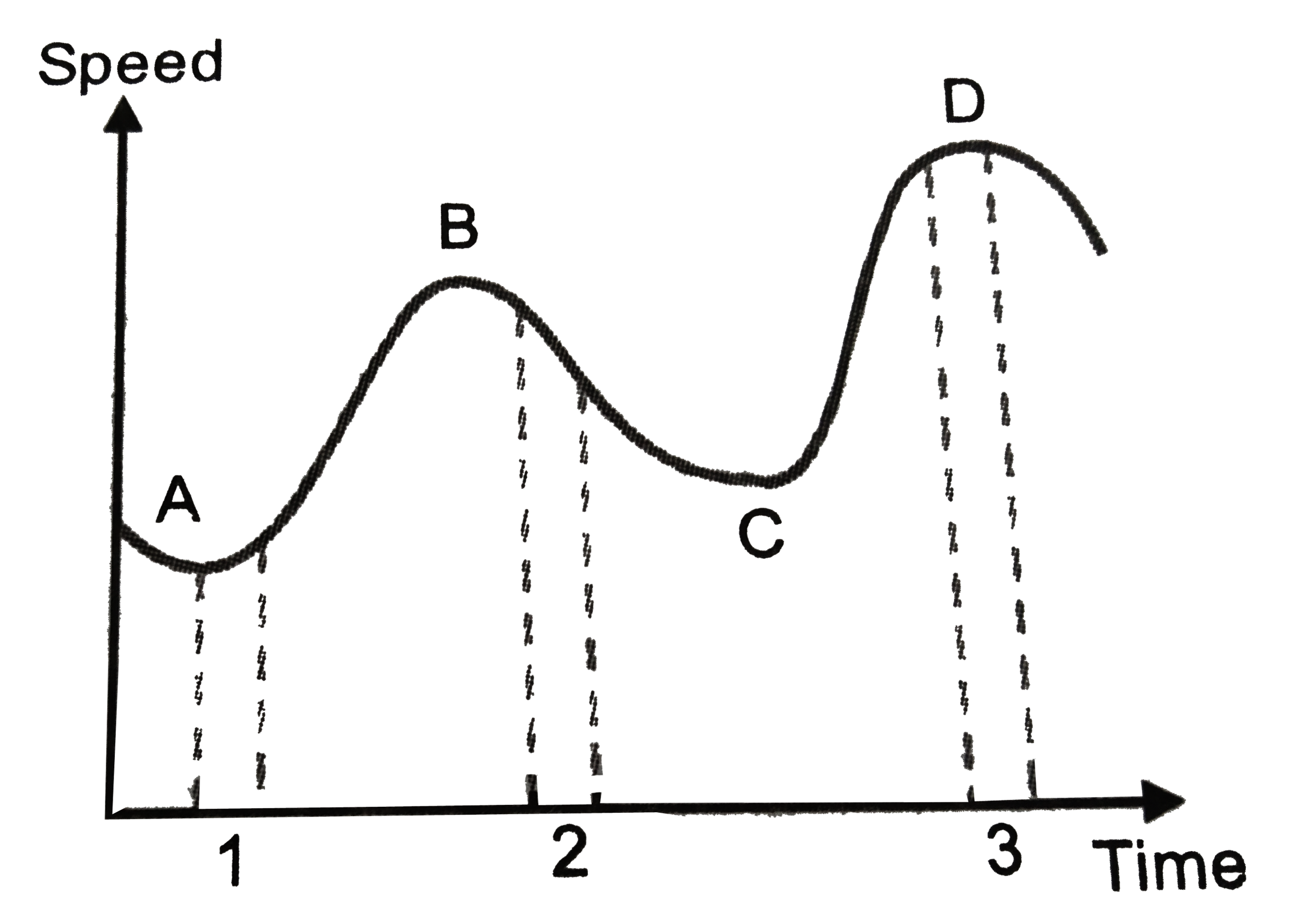 .View Solution
.View SolutionQuestion 23
A three wheeler starts from rest, accelerates uniformly with 1ms−2 on a straight road for 10s and then moves with uniform velocity. Plot a graph between the distance covered by the vehicle during the nth second ( n = 1,2,3, ……..) versus n. What do you expect the plot to be during accelerated motion: a straight line or a parabola?
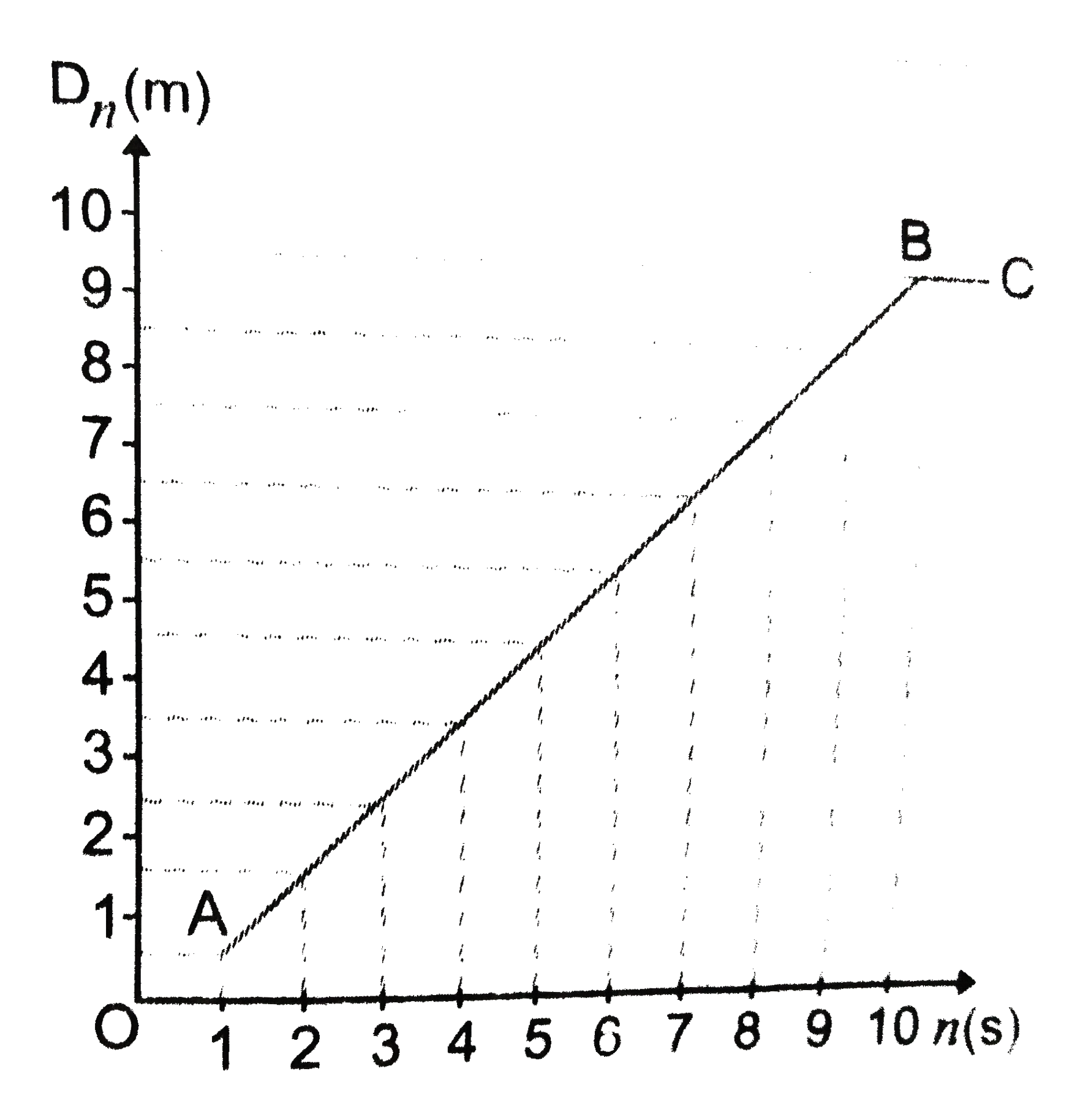 .View Solution
.View SolutionQuestion 24
A boy standing on a stationary lift (open from above) throws a ball upwards with the maximum initial speed he can, equal to 49ms−1. How much time does the ball take to return to his hands? If the lift starts moving up with a uniform speed of 5ms−1 and the boy again throws the ball up with the maximum speed he can, how long does the ball take to return to his hands?View SolutionQuestion 25
On a long horizontally moving belt, a child runs to and fro with a speed 9kmh−1 ( with respect to the belt) between his father and mother located 50m a part on the moving belt. The belt moves with a speed of 4kmh−1. For an observer on a stationery platform outside, what is the
(i) speed of the child running in the direction of motion of the belt?
(ii) speed of the child running opposite to the direction of motion of the belt? (iii) time taken by child in (i) and (ii) ?
which of the answers alter if motion is viewed by one of the parents?
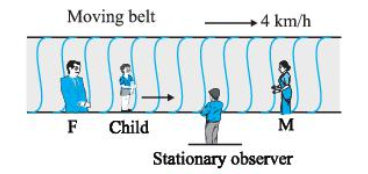 View Solution
View SolutionQuestion 26
Two stones are thrown up simultaneously from the edge of a cliff 200m high with initial speeds of 15ms−1 and 30ms−1. Verify that the graph shown in Fig. 2 ( NCT). 13 , correctly represents the time variation of the relative position of the second stone with respect to the first. Neglect the air resistance and assume that the stones do not rebound after hitting the ground. Take g=10ms−2.Give equations for the linear and curved parts of the plot.
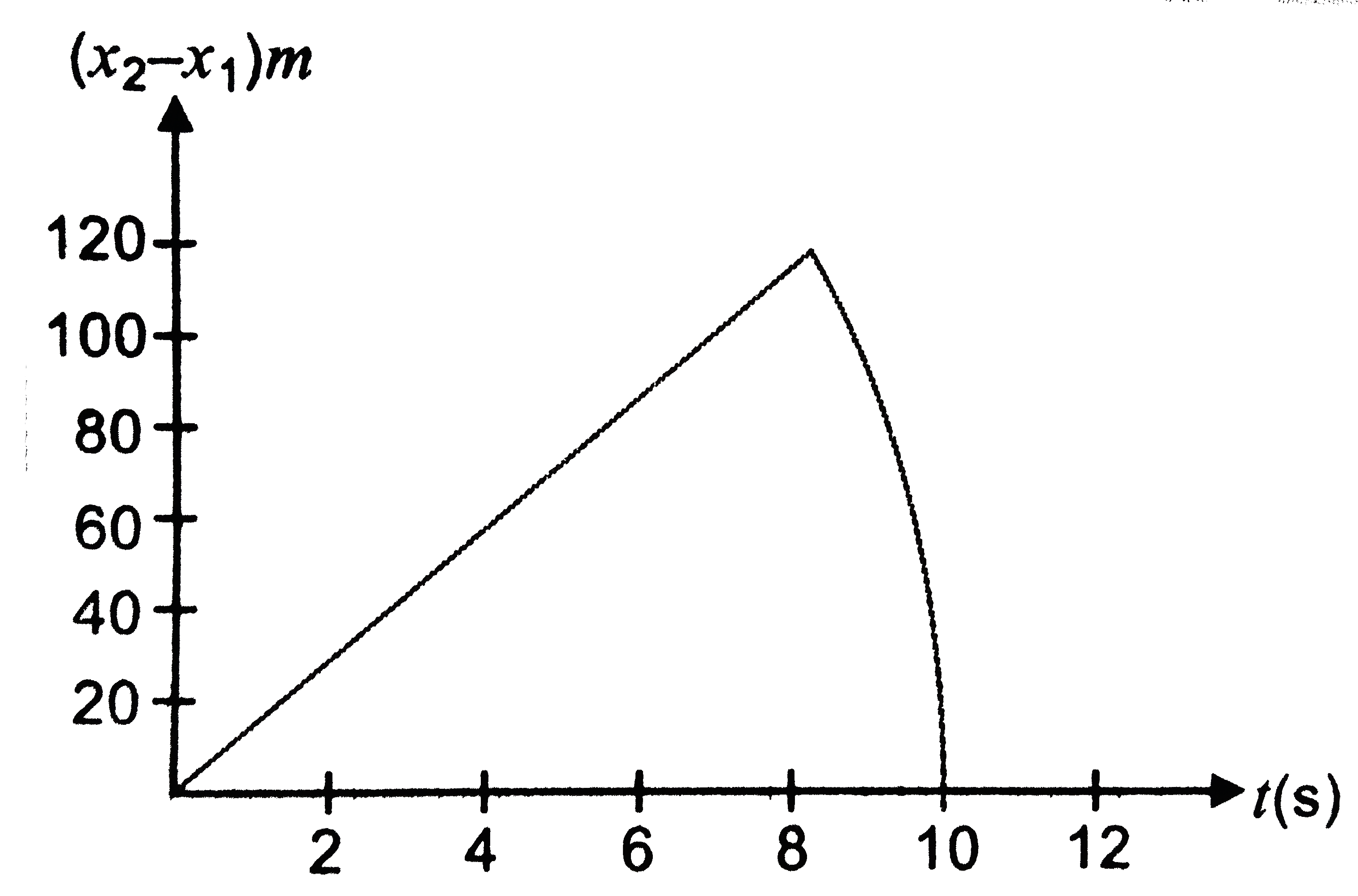 .View Solution
.View SolutionQuestion 28
The velocity-time graph of a particle in one-dimensional motion is shown in Fig.:
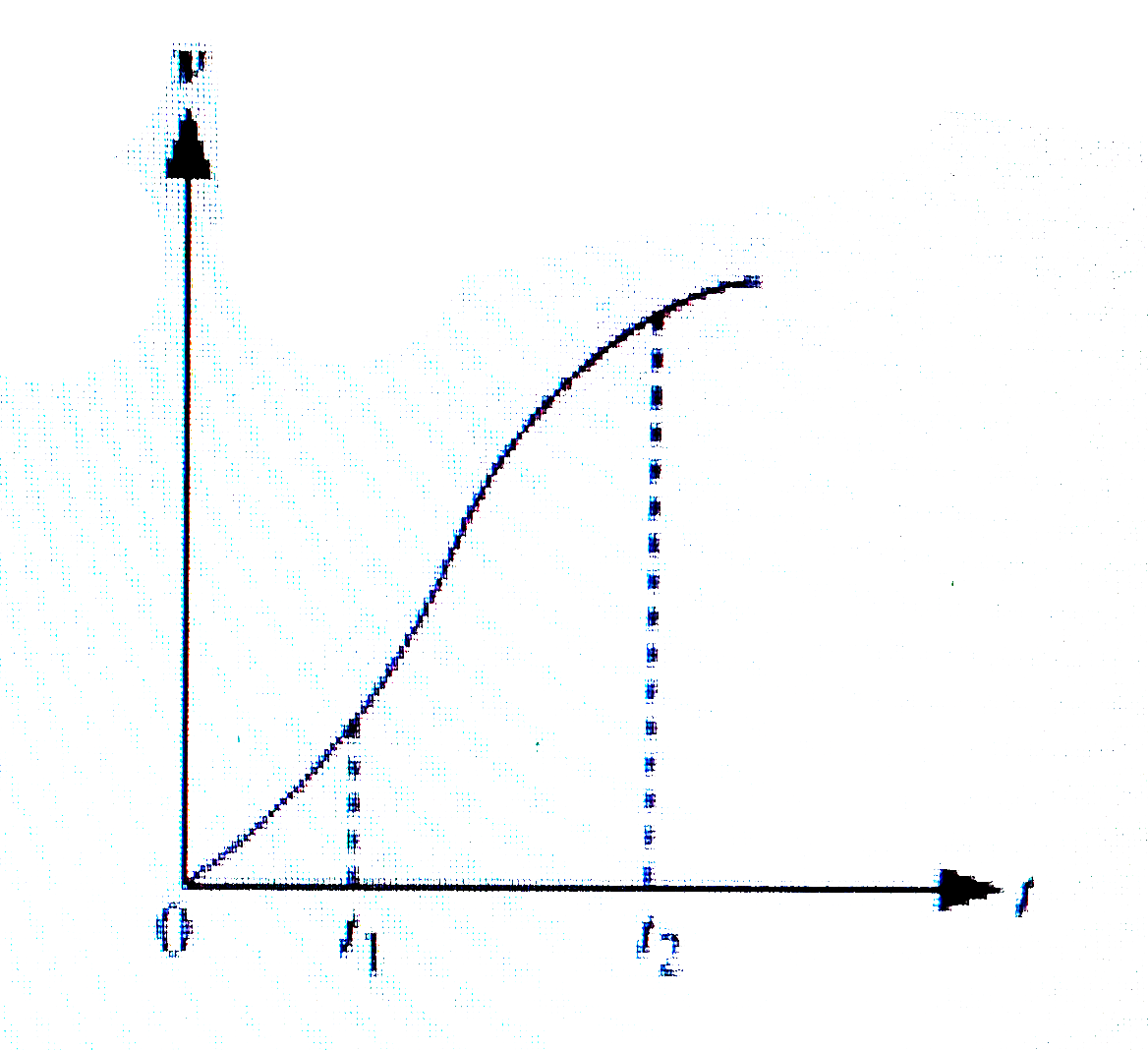
(a) Which of the following formulae are correct for describing the motion of the particle over the time-interval t1 to t2:
(a) x(t2)=x(t1)+v(t1)(t2−t1)+(1/2)a(t2−t1)2
(b) v(t2)=v(t1)+a(t2−t1)
(c) vaverage=(x(t2)−x(t1))/(t2−t1)
(d) aaverage=(v(t2)−v(t1))/(t2−t1)
(e) x(t2)=x(t1)+vaverage(t2−t1)+(1/2)aaverage(t2−t1)2
(f) x(t2)−x(t1) = area under the v−t curve bounded by the t-axis and the dotted line shown.View Solution
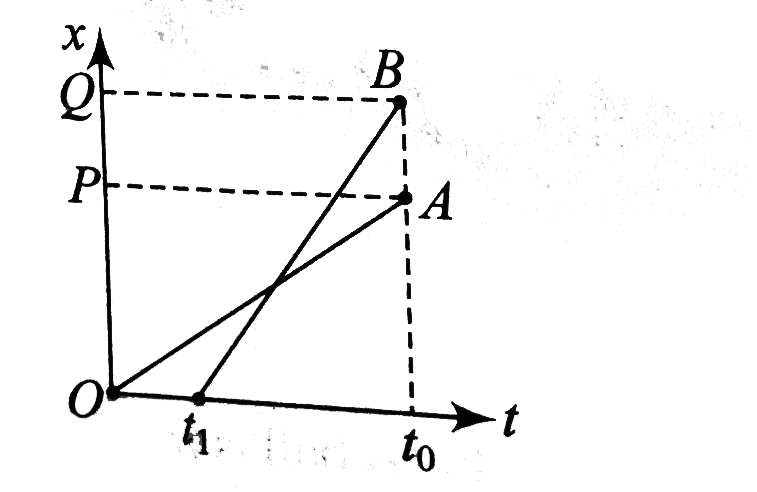
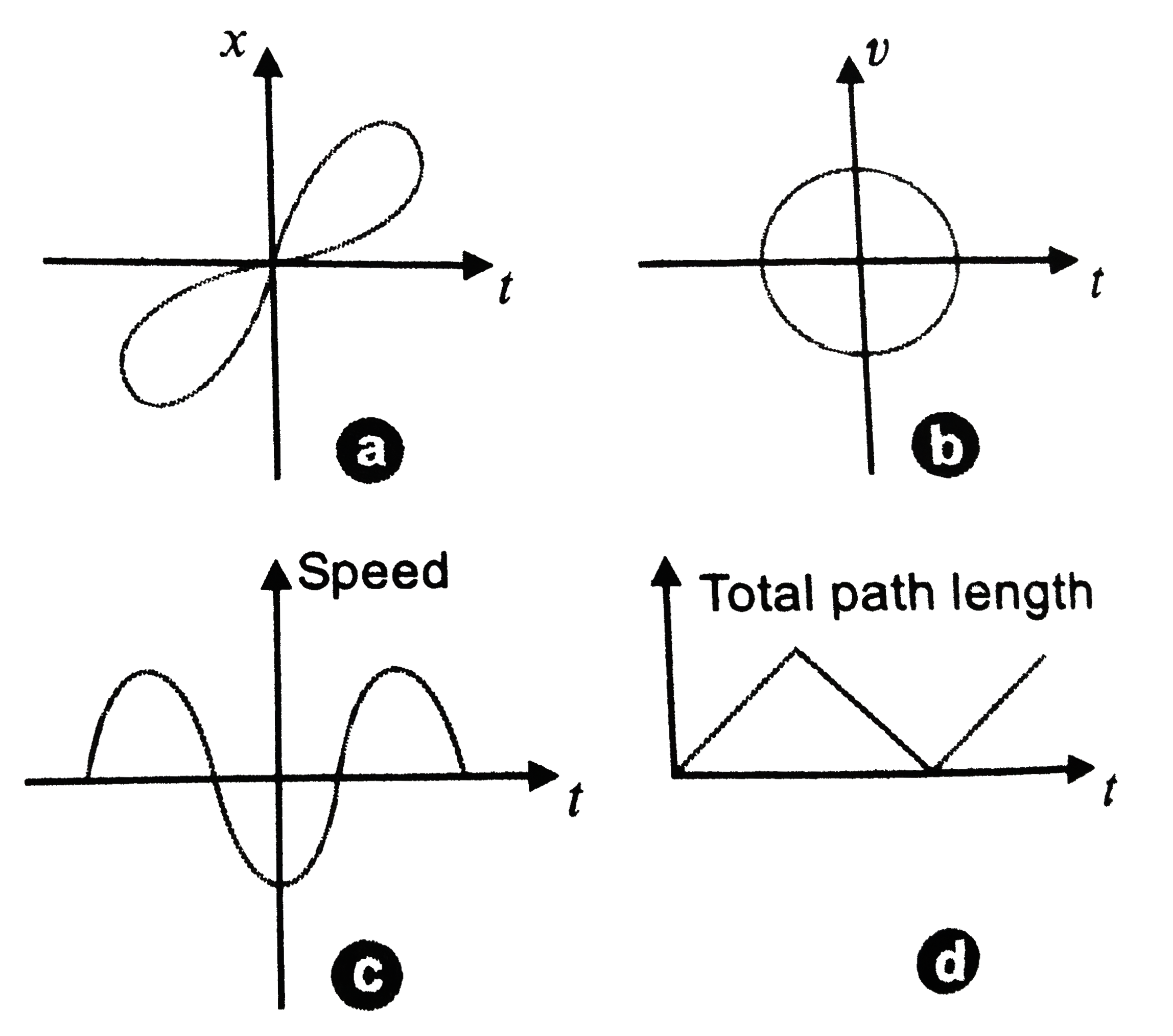
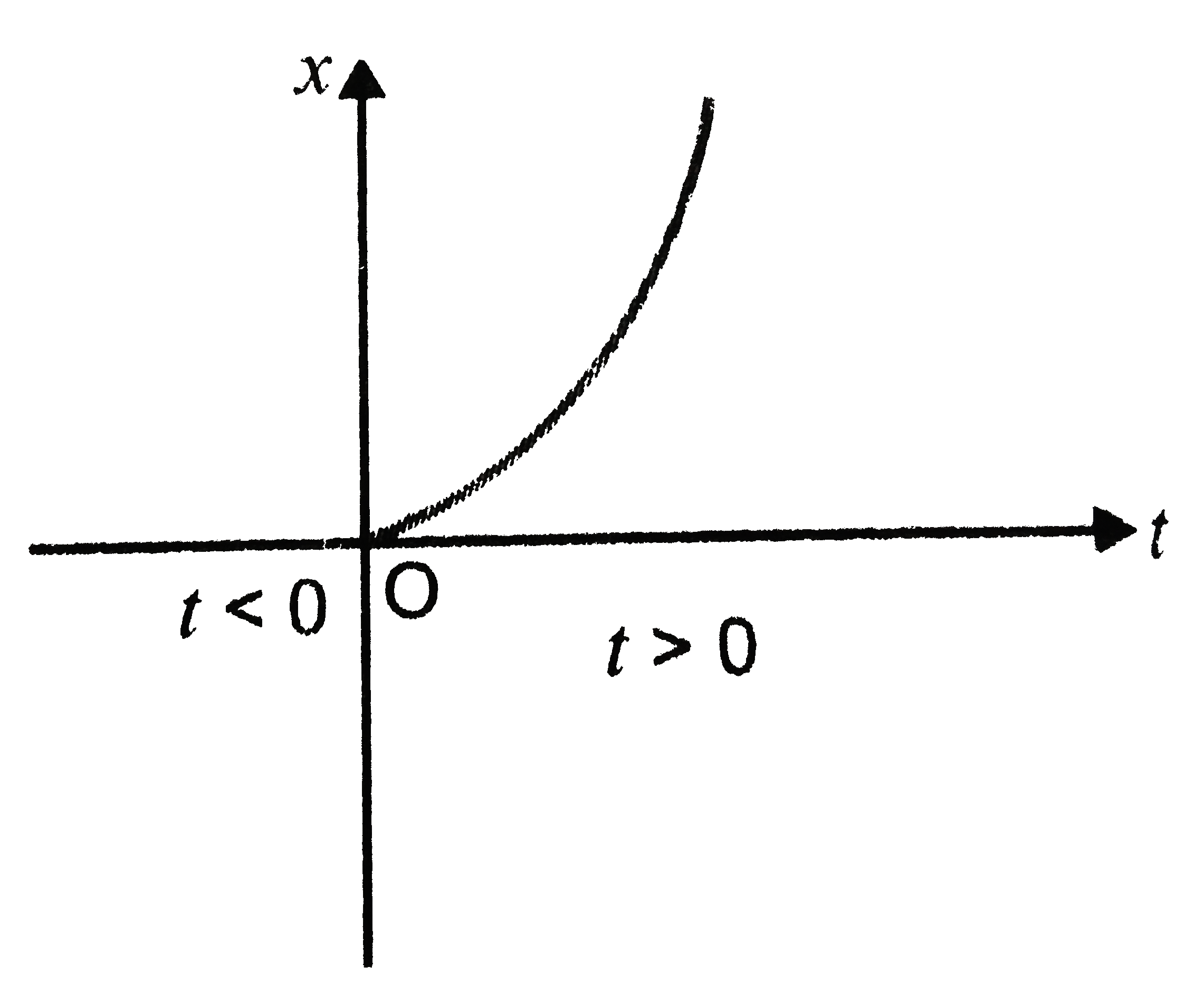
 .
.
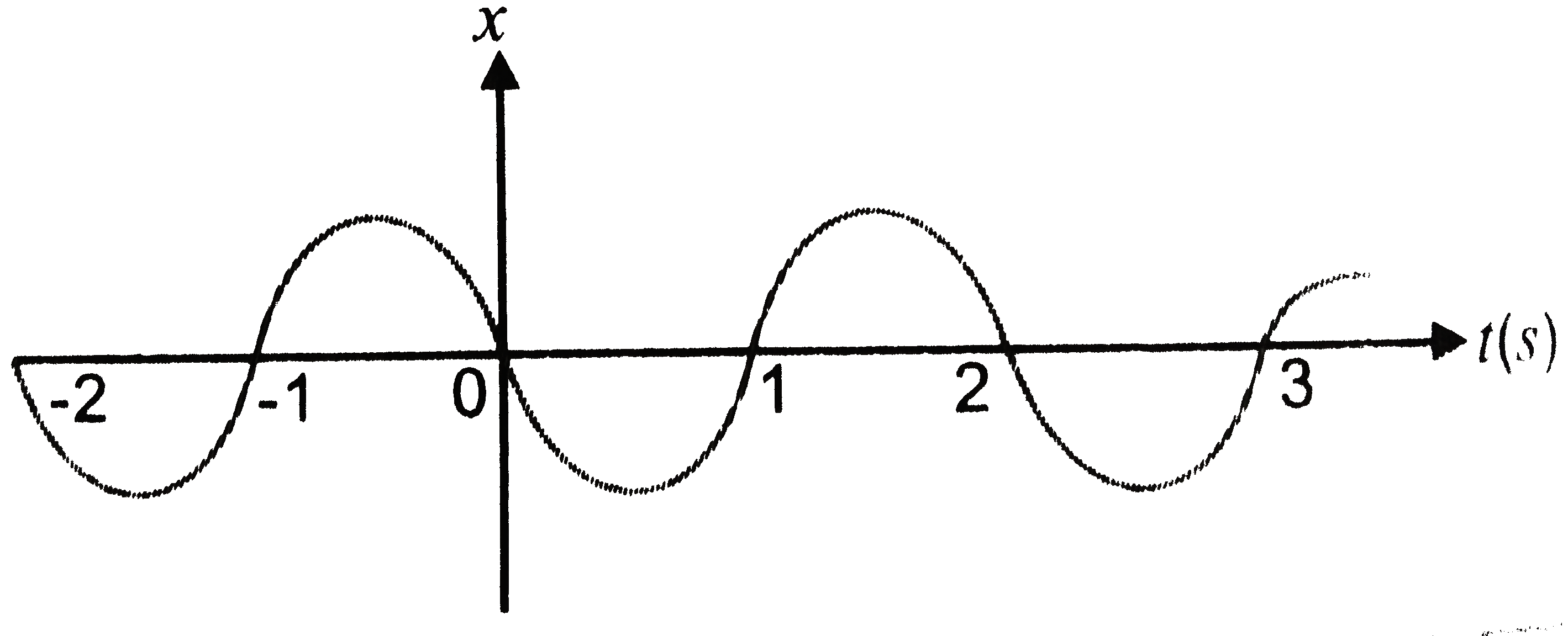
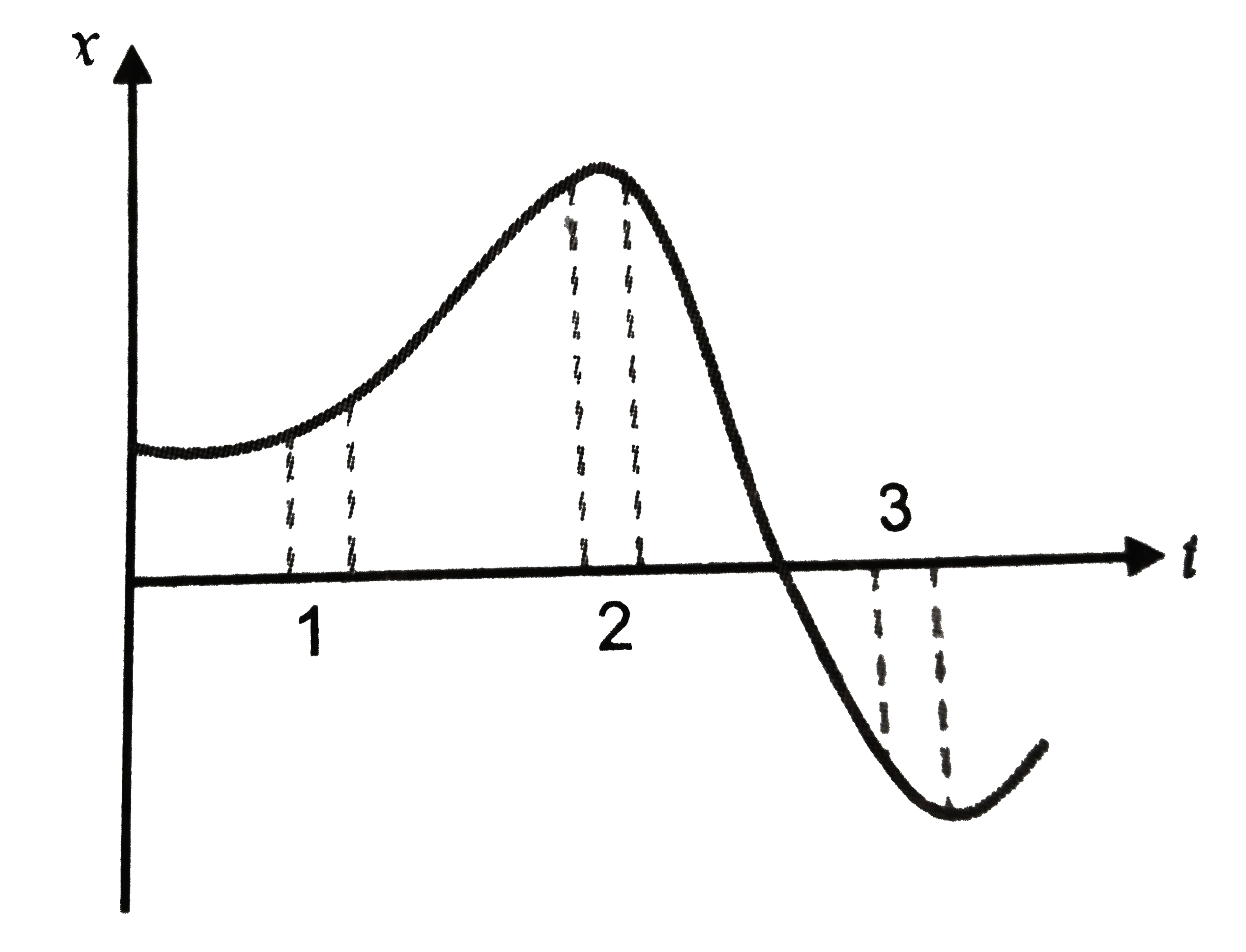 .
.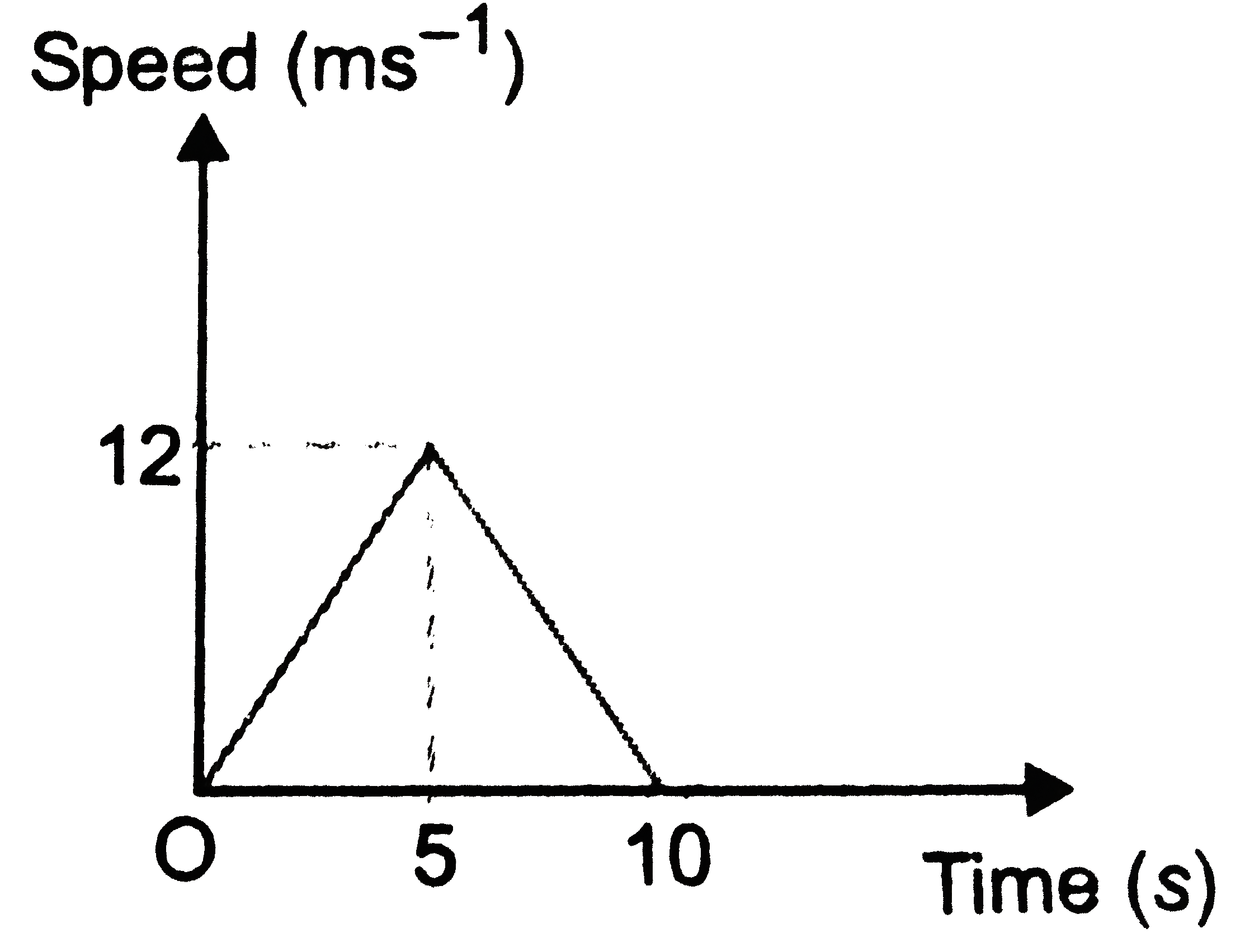 .
what is the average speed of the particle over the intervals?
.
what is the average speed of the particle over the intervals?